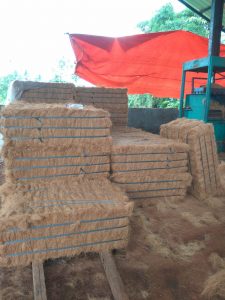
Benefits of Coconut Coir Cocopeat
Benefits of Coconut Coir Cocopeat for Agriculture In the world of organic-based agriculture, using coconut husk as a solid fertilizer has an important role in


Benefits of Coconut Coir Cocopeat for Agriculture In the world of organic-based agriculture, using coconut husk as a solid fertilizer has an important role in

Cocopeat is obtained through the process of decomposition of coconut shells so that 2 commodities / products are obtained

Our gallery


Coconut shell, which is the raw material for charcoal briquettes, is currently exported from Indonesia to almost 50% of the total output with an increase of 4% per year. In the future it can be predicted that there will be scarcity of coconut shell raw material in Indonesia.

Coconut husks or shells are processed or mashed into sawdust-like grains to make cocopeat. You can read our article for more information.
When we extract the coconut husk material, we get three things: cocofiber, cocopeat, and coconut chips. The cocofiber is the straw-like part of the coconut husk. In this article, we’ll explain what a cocofiber product is and what it can do for you. You can read our article for more information.
Coir, often known as coconut fibre, is a natural fiber derived from the coconut husk. Coconut fiber has been used to make natural coconut ropes.
A mixture of substances is pressed and dried into hard blocks to make charcoal briquettes. This process is widely used to increase the selling value and advantages of coal with a low calorific value or coal flakes. Briquettes are utilized in both industry and domestic settings. One invention is the conversion of coconut waste into briquettes.
Coconut coir consists of 30 percent coconut fiber and 70 percent meat. It is separated from each other, made into many small pieces by machine technology.